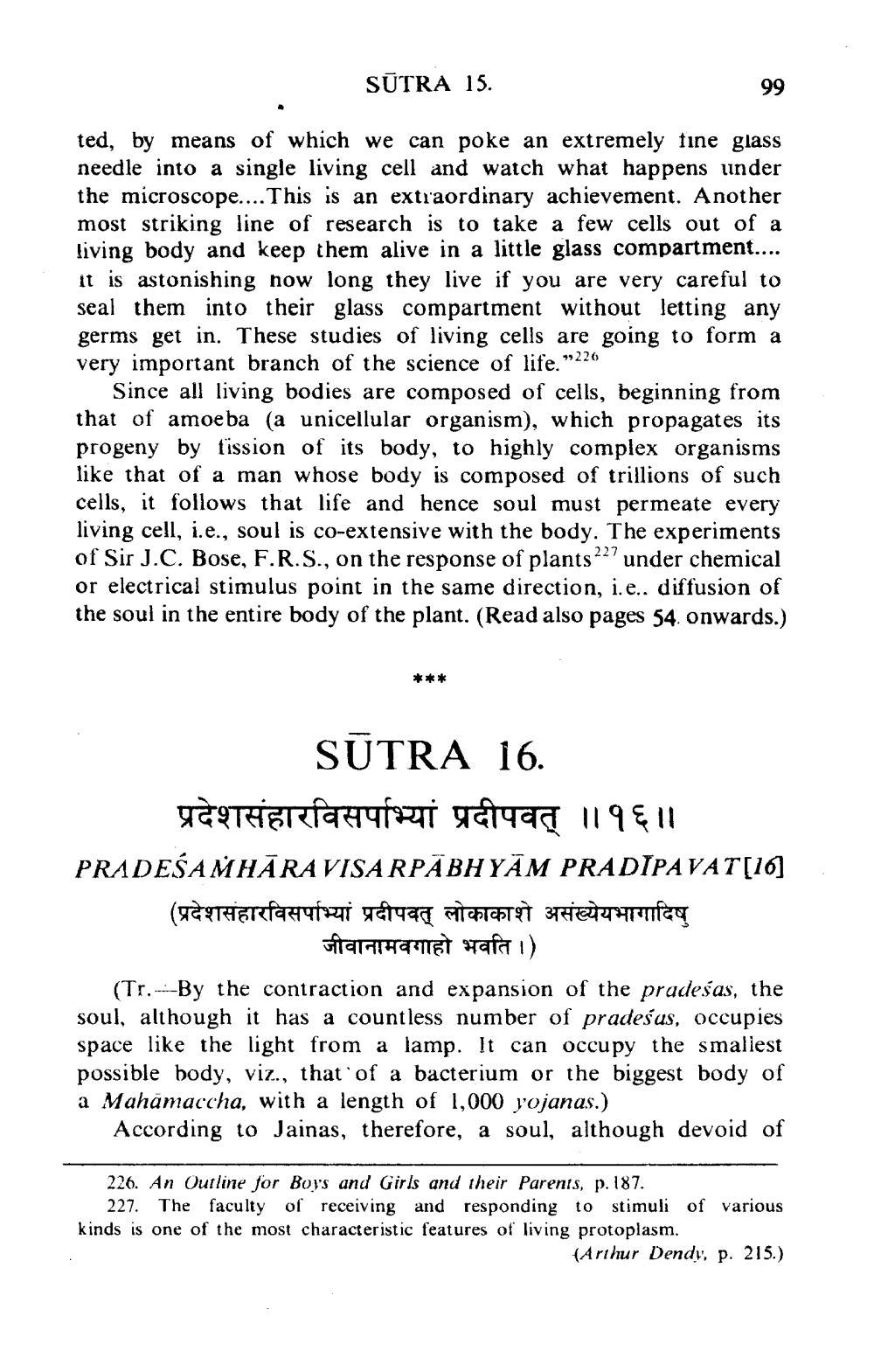________________
SUTRA 15.
99
ted, by means of which we can poke an extremely fine glass needle into a single living cell and watch what happens under the microscope.... This is an extraordinary achievement. Another most striking line of research is to take a few cells out of a living body and keep them alive in a little glass compartment.... It is astonishing now long they live if you are very careful to seal them into their glass compartment without letting any germs get in. These studies of living cells are going to form a very important branch of the science of life.”2
Since all living bodies are composed of cells, beginning from that of amoeba (a unicellular organism), which propagates its progeny by fission of its body, to highly complex organisms like that of a man whose body is composed of trillions of such cells, it follows that life and hence soul must permeate every living cell, i.e., soul is co-extensive with the body. The experiments of Sir J.C. Bose, F.R.S., on the response of plants227 under chemical or electrical stimulus point in the same direction, i.e.. diffusion of the soul in the entire body of the plant. (Read also pages 54. onwards.)
*
*
*
SUTRA 16. प्रदेशसंहारविसर्पाभ्यां प्रदीपवत् ॥१६॥ PRADEŠAMHĀRAVISARPĀBHYĀM PRADIPAVAT[16] (प्रदेशसंहारविसर्पाभ्यां प्रदीपवत् लोकाकाशे असंख्येयभागादिषु
जीवानामवगाहो भवति।) (Tr.-By the contraction and expansion of the pradešas, the soul, although it has a countless number of pradesus, occupies space like the light from a lamp. It can occupy the smallest possible body, viz., that of a bacterium or the biggest body of a Mahamaccha, with a length of 1,000 yojanas.)
According to Jainas, therefore, a soul, although devoid of
226. An Outline for Boys and Girls and their parents, p. 187.
227. The faculty of receiving and responding to stimuli of various kinds is one of the most characteristic features of living protoplasm.
(Arthur Dendy, p. 215.)




